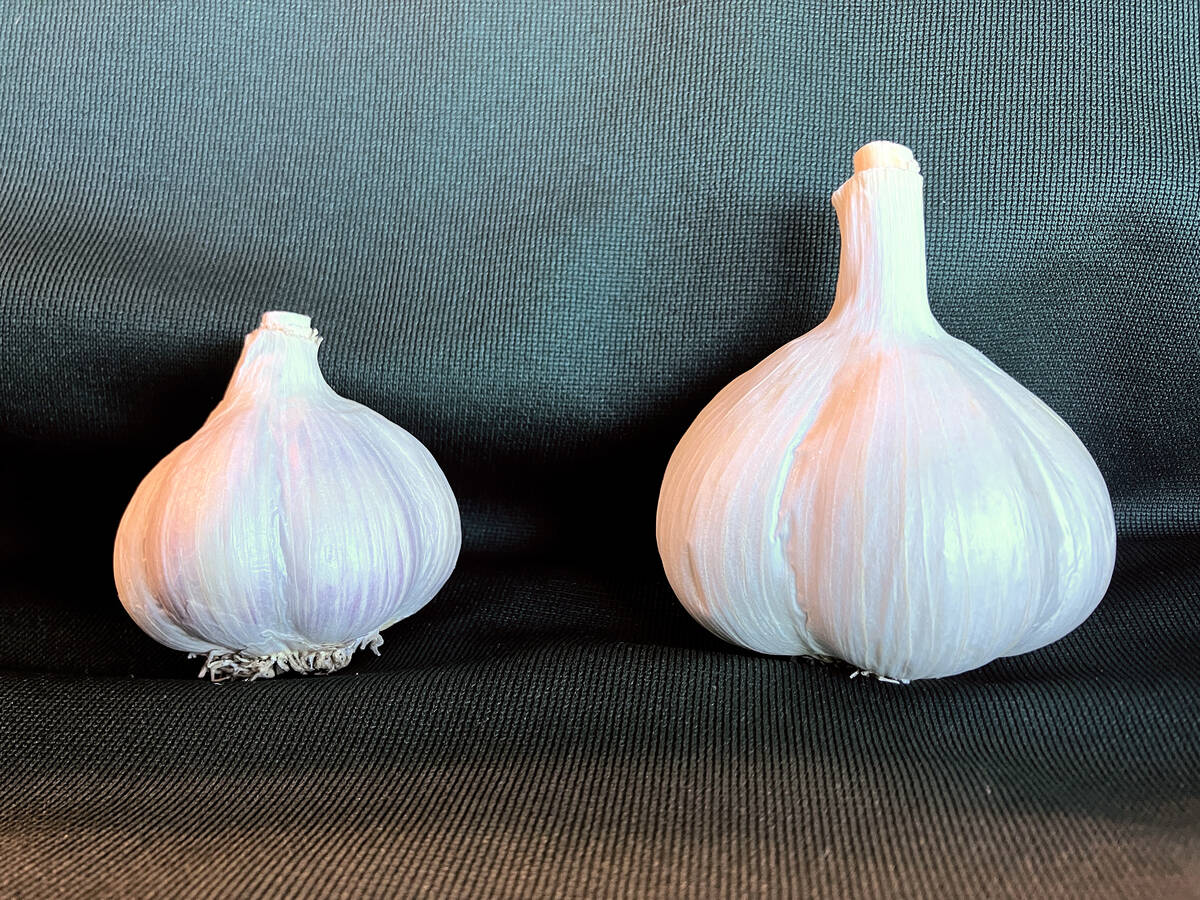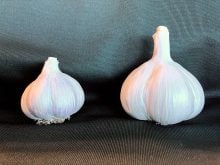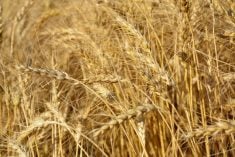Is your soil fertility program working? Even if it is, common myths about nutrient management and soil sampling can hamper your efforts, according to a soil specialist.
Colin Elgie, soil fertility specialist with the Ontario Ministry of Agriculture, Food and Agribusiness, detailed a number of myths farmers should be aware of, while speaking to Chatham-area farmers at an Aug. 7 Ontario Soil and Crop Improvement Association event.
Myth 1: How soil is analyzed doesn’t matter.
Read Also

Clean seed garlic promises bigger bulbs and higher returns for growers
Ontario garlic trials show clean seed outshines conventional yields, with stronger drought resilience, reduced virus risk and greater economic outcomes.
It does matter, said Elgie. There are different types of soil tests, but how they work can bring different fertility results.
“Twenty parts per million of phosphorus from an Olson test is not going to be the same number as you get from a Bray test …which means we have no guidelines for fertilizer recommendation,” says Elgie. The key is to use provincially accredited labs and processes.
“The Ontario soil testing accreditation program is based on Ontario soils and Ontario conditions. So, it’s set to give you the most accurate results possible. It’s like deciding where to get your Lamborghini fixed. Do you go to your dealer, or do you go to Uncle Ron’s Taxidermy, Bait and Body Shop to get it fixed?
“It’s the same thing. You want the right tools, the right accuracy of the product that you’re getting, so we’ve got to send it to a spot where it makes sense.”
Myth 2: It doesn’t matter when you take soil samples.
There are good and not-so-good times to take soil samples. Generally, consistency is key.
“The difficulty comes when you start sampling at different times in the year,” says Elgie.
Studies from the United States, for example, show fertility results for potassium in corn dip substantially in August, before climbing again as the nutrient leeches from the crop residue back into the soil. Taking a soil sample in mid-season, therefore, would generate skewed results. Other nutrients and soil pH can also fluctuate through the year.
Myth 3: Match sample depth with tillage depth.
Soil samples should be taken to six inches of depth, regardless of tillage depth, says Elgie.
“We want to sample to a six-inch depth because that’s where our roots are. That’s where the worms go, that’s where all the nutrient gets cycled in.”
Sampling shallower could show higher fertility levels, while deeper sampling could dilute fertility readings.
“All our fertility recommendations in Ontario are based on that six-inch depth. That’s what we have to stick to, no matter what you’re sampling. The only difference would be if you’re sampling mobile nutrients like nitrogen or sulphur, where they do move through the soil profile more, so you do go deeper to 30 centimetre or 12-inch depth.”
Elgie reiterates that it’s important to sample before tilling.
Myth 4: Any lime product will do.
There are several sources of lime, including traditional ones like calcitic and dolomitic, and others that include potassium and sulphur or other packages of nutrients.
“It all depends on what type of lime it is and how well suited it is to change that pH … It’s about how well that lime will neutralize the pH of the soil. In a lot of cases, we have a cheap source of lime, but if you’ve ever applied a really cheap source of lime, you can see that it’s like gravel,” says Elgie.
“When it’s really chunky like that, there’s not a lot of surface area for that lime to get to work and it takes a lot longer for that lime to actually get the value, if it does at all.”
It also depends on what other nutrients are required. Dolomitic lime, for example, would suit a field in need of both magnesium and lower pH.
Myth 5: Potassium in sulfate of potash is more readily available in muriate of potash.
Muriate of potash is more water soluble than sulfate of potash. This means it can break down and be absorbed by plants more quickly, Elgie says.
The main difference is the use. Muriate of potash has a higher salt index, which can cause crop injury when applied as banded starter fertilizer. It’s also a source of chloride, which can be an issue in crops sensitive to that. Muriate of potash is generally cheaper, which is why it is more common.
“So, there is a difference, but it’s more related to crop safety and the cost than the actual availability itself.”
Myth 6: Organic amendments are too variable to quantify specific fertility impacts.
The nutrient value of manure and other organic amendments can vary, but that doesn’t mean the true value can’t be measured. By taking samples and running the data through the organic amendment calculator in AgriSuite – a free crop management decision tool from the Ontario government – growers can know the approximate value of that amendment in different scenarios.
An example, says Elgie, is the difference in value of spent mushroom substrate, applied at five tonnes per acre and incorporated one day after spring application, compared to application onto cover crops in late summer. AgriSuite can estimate the total dollar value in each case, based on predictive models of what nutrients and trace elements (manganese, boron, etc.) will be available.
“It’s a much simpler way to figure out, first of all, can I reduce my P and K applications, can I reduce my nitrogen application, and then give a breakdown by scenario so I can figure out what’s the best time to actually apply that,” Elgie says.















